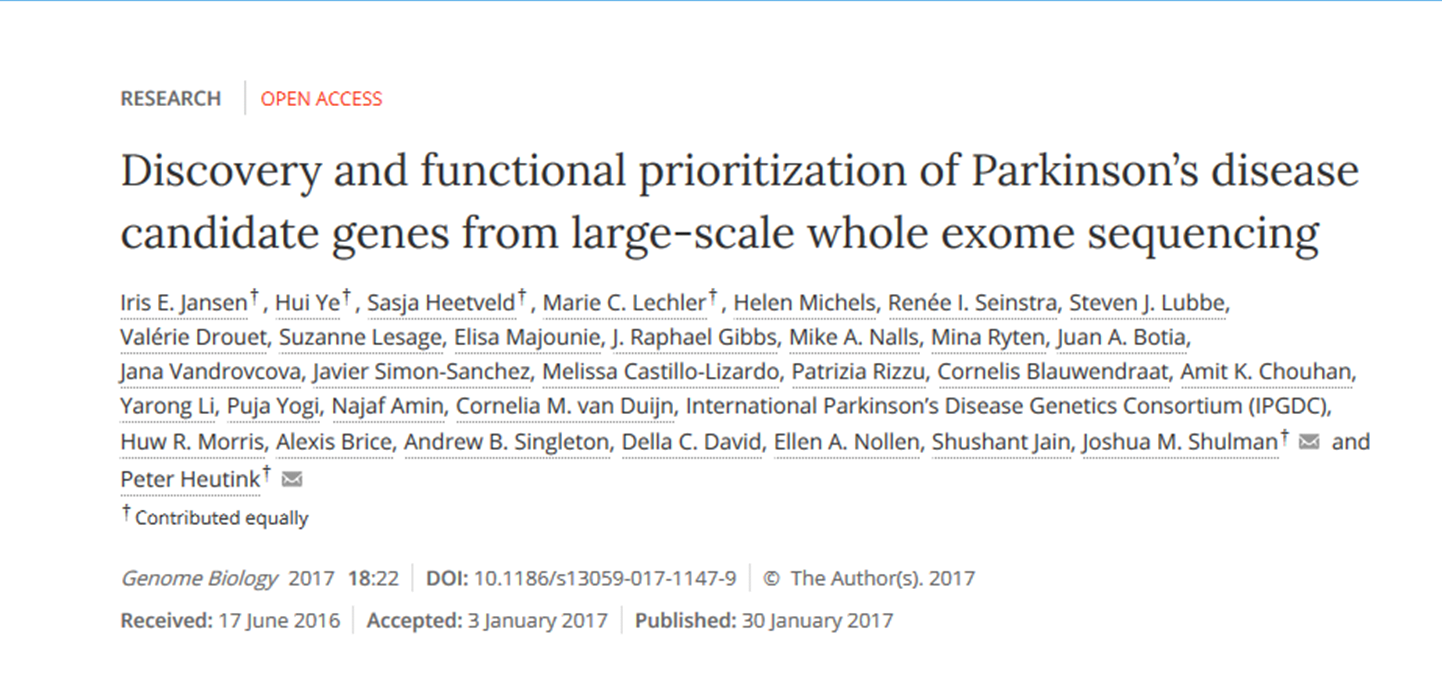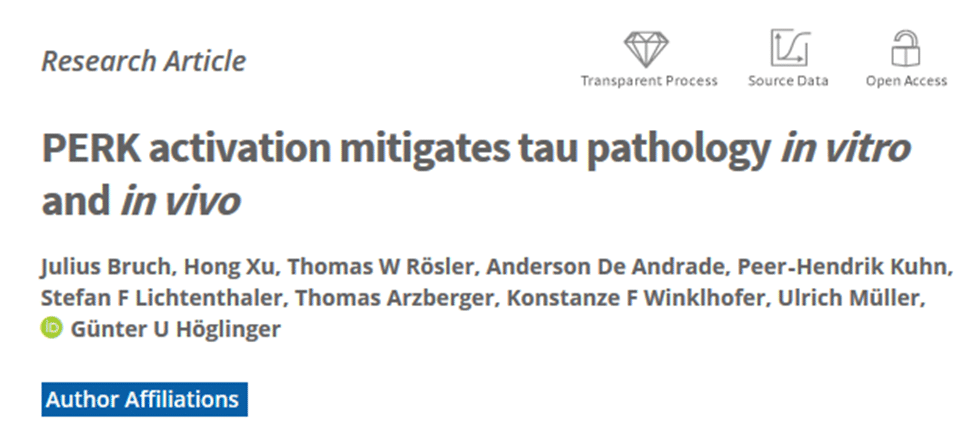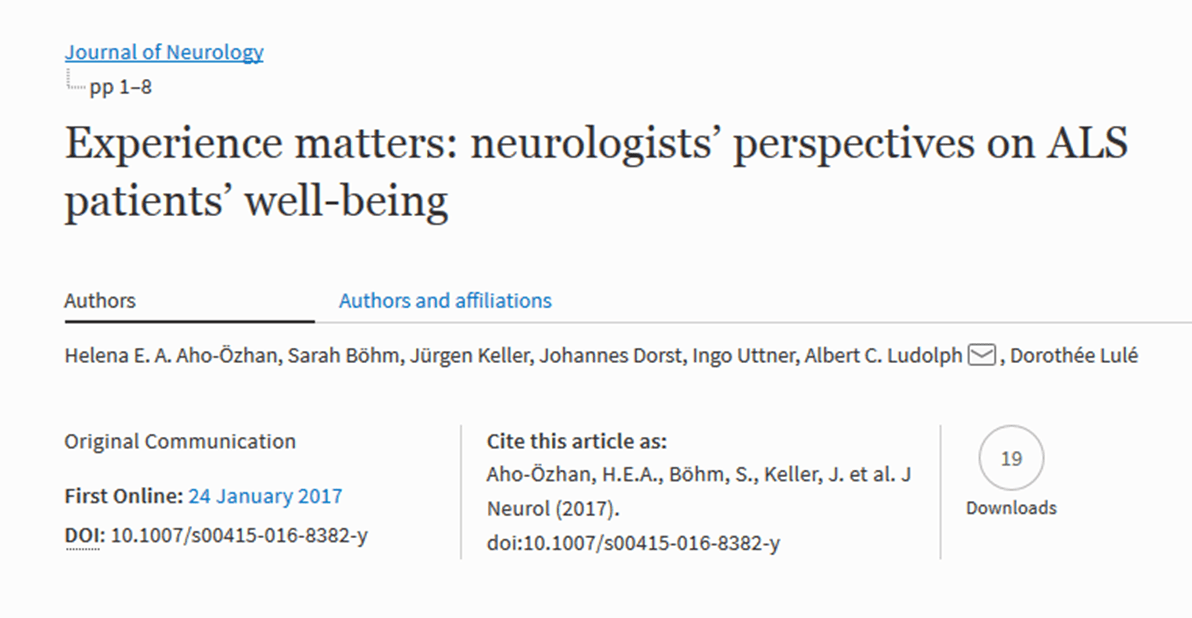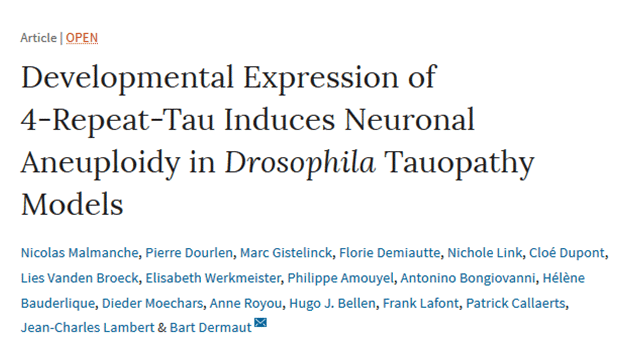 “Discovery and functional prioritization of Parkinson’s disease candidate genes from large-scale whole exome sequencing” has been published in Genome Biology. This work was supported in part by JPND through the COURAGE-PD project, selected in the 2012 risk factors call.
“Discovery and functional prioritization of Parkinson’s disease candidate genes from large-scale whole exome sequencing” has been published in Genome Biology. This work was supported in part by JPND through the COURAGE-PD project, selected in the 2012 risk factors call.
Author Archives: jpnd
In a recent study of adults with early memory loss, a research team found that practice of a simple meditation or music listening program may have multiple benefits for older adults with preclinical memory loss.
In this randomized controlled trial, 60 older adults with subjective cognitive decline (SCD), a condition that may represent a preclinical stage of Alzheimer’s disease, were assigned to either a beginner meditation (Kirtan Kriya) or music listening program and asked to practice 12 minutes/day for 12 weeks. As detailed in a paper published by the Journal of Alzheimer’s Disease, both the meditation and music groups showed marked and significant improvements in subjective memory function and objective cognitive performance at three months. These included domains of cognitive functioning most likely to be affected in preclinical and early stages of dementia (e.g., attention, executive function, processing speed, and subjective memory function). The substantial gains observed in memory and cognition were maintained or further increased at 6 months (3 months post-intervention).
Both intervention groups also showed improvements in sleep, mood, stress, well-being and quality of life, with gains that were that were particularly pronounced in the meditation group; again, all benefits were sustained or further enhanced at 3 months post-intervention.
The findings of this trial suggest that two simple mind-body practices, Kirtan Kriya meditation and music listening, may not only improve mood, sleep, and quality of life, but also boost cognition and help reverse perceived memory loss in older adults with SCD.
Paper: “Meditation and Music Improve Memory and Cognitive Function in Adults with Subjective Cognitive Decline: A Pilot Randomized Controlled Trial”
Reprinted from materials provided by IOS Press.
 “PERK activation mitigates tau pathology in vitro and in vivo“ has been published in EMBO Molecular Medicine. This work was supported in part by JPND through the RiMOD‐FTD project, selected in the 2012 risk factors call.
“PERK activation mitigates tau pathology in vitro and in vivo“ has been published in EMBO Molecular Medicine. This work was supported in part by JPND through the RiMOD‐FTD project, selected in the 2012 risk factors call.
A study that followed more than 1,600 Canadians over five years found that sedentary older adults with no genetic risk factors for dementia may be just as likely to develop the disease as those who are genetically predisposed to it.
The findings, published in the Journal of Alzheimer’s Disease, shed new light on the relationship between genes, lifestyle risk factors and dementia.
The researchers, who tracked participants in the Canadian Study of Health and Aging, found that while carriers of a variant of the ‘apolipoprotein E’ genotype are more likely to develop dementia, inactivity dramatically increases the risk for non-carriers.
“Although age is an important marker for dementia, there is more and more research showing the link between genetic and lifestyle factors,” said Parminder Raina, a co-author of the paper. “This research shows that exercise can mitigate the risk of dementia for people without the variant of the apolipoprotein genotype.”
In a separate ongoing study, researchers are comparing the possible benefits of high-intensity training (HIIT) versus moderate continuous training (MCT) and stretching in older adults.
Paper: “Physical Exercise Moderates the Relationship of Apolipoprotein E (APOE) Genotype and Dementia Risk: A Population-Based Study”
Reprinted from materials provided by McMaster University.
Immunotherapy has proven to be effective against many serious diseases. But to treat diseases in the brain, the antibodies must first get past the obstacle of the blood-brain barrier. In a new study published in Theranostics, a research group describes their development of a new antibody design that increases brain uptake of antibodies almost 100-fold.
Immunotherapy entails treatment with antibodies; it is the fastest growing field in pharmaceutical development. In recent years, immunotherapy has successfully been used to treat cancer and rheumatoid arthritis, and the results of clinical studies look very promising for several other diseases. Antibodies are unique in that they can be modified to strongly bind to almost any disease-causing protein. In other words, major potential exists for new antibody-based medicines.
The problem with immunotherapy for diseases affecting the brain is that the brain is protected by a very tight layer of cells, called the blood-brain barrier. The blood-brain barrier effectively prevents large molecules, such as antibodies, from passing from the bloodstream into the brain. It has therefore been difficult to use immunotherapy to treat Alzheimer’s and Parkinson’s disease, which affect the brain, as well as cancerous tumours in the brain.
It has been known for a long time that some large proteins are actively transported across the blood-brain barrier. These include a protein called transferrin, whose primary task is to bind to iron in the blood and then transport it to the brain. The research group behind this new study has taken advantage of this process and modified the antibodies they want to transport into the brain using components that bind to the transferrin receptor. Then, like a Trojan horse, the receptor transports antibodies into the brain. The number of modifications to and placement of the antibodies have proven to be important factors for making this process as effective as possible.
To try out the new format, researchers have used it on an antibody that binds to a protein involved in the course of Alzheimer’s disease. Without the modification, they could only detect very small quantities of antibody in the brain in a mouse model of Alzheimer’s disease, while they could detect high levels of the modified antibody in the same mice.
Paper: “Bivalent Brain Shuttle Increases Antibody Uptake by Monovalent Binding to the Transferrin Receptor”
Reprinted from materials provided by Uppsala University.
Researchers have discovered that the spatial disorientation that leads to wandering in many Alzheimer’s disease patients is caused by the accumulation of tau protein in navigational nerve cells in the brain. The findings, in mice, could lead to early diagnostic tests for Alzheimer’s and highlight novel targets for treating this common and troubling symptom.
The study was published online in the journal Neuron.
An estimated three out of five people with Alzheimer’s disease wander and get lost, usually beginning in the early stages of the disease, leaving them vulnerable to injury. Researchers suspect that these problems originate in an area of the brain known as the entorhinal cortex (EC). The EC plays a key role in memory and navigation and is among the first brain structures affected by the buildup of neurofibrillary tangles that are largely composed of tau, a hallmark of Alzheimer’s disease.
The researchers focused their investigations on excitatory grid cells, a type of nerve cell in the EC that fires in response to movement through space, creating a grid-like internal map of a person’s environment. The researchers made electrophysiological recordings of the grid cells of older mice–including mice engineered to express tau in the EC (EC-tau mice) and normal controls–as they navigated different environments. Spatial cognitive tasks revealed that the EC-tau mice performed significantly worse compared to the controls, suggesting that tau alters grid cell function and contributes to spatial learning and memory deficits.
Detailed histopathological analysis of the mouse brains revealed that only the excitatory cells, but not the inhibitory cells, were killed or compromised by pathological tau, which probably resulted in the grid cells firing less.
The findings raise the possibility that spatial disorientation could be treated by correcting this imbalance through transcranial stimulation, deep-brain stimulation, or light-based therapy.
Paper: “Tau Pathology Induces Excitatory Neuron Loss, Grid Cell Dysfunction, and Spatial Memory Deficits Reminiscent of Early Alzheimer’s Disease”
Reprinted from materials provided by Columbia University Medical Center.
While many of us haven’t heard of astrocytes, these cells are four times as plentiful in the human brain as nerve cells. Now, a team of researchers has found that astrocytes, which perform many indispensable functions in the brain, can take on a villainous character, destroying nerve cells and likely driving many neurodegenerative diseases.
A study describing the findings was published in Nature.
Up to now, the pharmaceutical industry has mostly targeted nerve cells, also known as neurons. But a broad range of brain disorders may be treatable by blocking astrocytes’ metamorphosis into toxic cells, or by pharmaceutically countering the neuron-killing toxin those harmful cells almost certainly secrete.
Once thought of as mere packing peanuts whose job it was to keep neurons from jiggling when we jog, astrocytes are now understood to provide critical hands-on support and guidance to neurons, enhancing their survival and shaping the shared connections between them that define the brain’s labyrinthine circuitry. It’s also known that traumatic brain injury, stroke, infection and disease can transform benign “resting astrocytes” into “reactive astrocytes” with altered features and behaviors. But until recently, whether reactive astrocytes were up to good or evil was an open question.
In 2012, researchers resolved that ambiguity when they identified two distinct types of reactive astrocytes, which they called A1 and A2. In the presence of LPS, a component found in the cell walls of bacteria, they observed that resting astrocytes somehow wind up getting transformed into A1s, which are primed to produce large volumes of pro-inflammatory substances. A2s, on the other hand, are induced by oxygen deprivation in the brain, which occurs during strokes. A2s produce substances supporting neuron growth, health and survival near the stroke site.
This raised two questions: How are A1s generated? And once they’re generated, what do they do? The new study answers both questions.
In addressing the first question, the study showed that the brain’s immune cells, microglia, which are known to become activated by LPS exposure as well as in most brain injuries and diseases, begin spewing out pro-inflammatory factors that change astrocytes’ behavior.
In a series of experiments using laboratory mice, the scientists identified three pro-inflammatory factors whose production was ramped up after LPS exposure. In the brain, all three of these substances are secreted exclusively by microglia. Each, by itself, had a partial A1-inducing effect on resting astrocytes. Combined, they propelled resting astrocytes into a full-fledged A1 state.
Next, the researchers confirmed that A1s jettison the nurturing qualities they’d had as resting astrocytes and instead became toxic to neurons.
In vertebrates, nerve cells called retinal ganglion cells (RGCs) send information from the retina to vision-processing centers in the brain. RGCs can thrive in culture, but only if accompanied by astrocytes. The scientists cultured rodent RGCs with either resting or A1 astrocytes and counted the resulting synapse numbers. RGCs cultured in combination with A1s produced only half as many synapses as RGCs grown with resting astrocytes, and those that formed didn’t work very well.
Further experiments showed that A1s lose resting astrocytes’ capacity to prune synapses that are no longer needed or no longer functional and whose continued existence undermines efficient brain function.
Indeed, when the researchers cultured healthy RGCs with increasingly stronger concentrations of the broth in which A1s had been bathing, almost all the RGCs eventually died. This and other experiments showed that A1s secrete a powerful, neuron-killing toxin.
The same treatment killed many other types of neurons, including both the spinal motor neurons that die in amyotrophic lateral sclerosis and the human dopaminergic neurons whose mysterious loss is the cause of Parkinson’s disease.
Finally, the researchers analyzed samples of human brain tissue from patients with Alzheimer’s disease, Parkinson’s disease, Huntington’s disease, amyotrophic lateral sclerosis and multiple sclerosis. In every case, they observed large numbers of A1s preferentially clustering where the disease was most active. For example, in the samples from Alzheimer’s patients, nearly 60 percent of the astrocytes present in the prefrontal cortex, a region where the disease takes a great toll, were of the A1 variety. Because A1s are highly toxic to both neurons and oligodendrocytes, these findings strongly imply that A1 formation is helping to drive neurodegeneration in these diseases.
Paper: “Neurotoxic reactive astrocytes are induced by activated microglia”
Reprinted from materials provided by Stanford University.
 “Experience matters: neurologists’ perspectives on ALS patients’ well-being” has been published in the Journal of Neurology. This work was supported by JPND through the NEEDS in ALS project, selected for support in the 2012 healthcare evaluation call.
“Experience matters: neurologists’ perspectives on ALS patients’ well-being” has been published in the Journal of Neurology. This work was supported by JPND through the NEEDS in ALS project, selected for support in the 2012 healthcare evaluation call.
 “Developmental Expression of 4-Repeat-Tau Induces Neuronal Aneuploidy in Drosophila Tauopathy Models” has been published in Scientific Reports. This work was supported in part by JPND through the INSTALZ project, selected for support in the 2015 JPco-fuND call.
“Developmental Expression of 4-Repeat-Tau Induces Neuronal Aneuploidy in Drosophila Tauopathy Models” has been published in Scientific Reports. This work was supported in part by JPND through the INSTALZ project, selected for support in the 2015 JPco-fuND call.
Using war metaphors in reference to Alzheimer’s disease should be replaced with messages of resilience against a complex, age-associated condition, according to a team of researchers.
Framing a health issue through comparisons to warfare is common in popular media and medical and research communities. While it can motivate efforts to deal with the issue, this type of language and messaging can also create fear and stigma, turn patients into victims and divert resources from critically important prevention and care, the researchers say.
Scholars have argued that metaphors and narratives that treat disease as something to be attacked can be socially damaging to those affected. The value of such metaphors may be clearer for infectious diseases caused by single pathogens. It becomes more problematic when discussing diverse, age-associated syndromes like Alzheimer’s that may not be fully curable. In this way, war metaphors in medicine can invite ways of thinking that may not be scientifically or socially productive.
The researchers propose moving toward different types of metaphors — those that encourage use of words like “slow” or “postpone” rather than “prevent” or “cure,” and emphasize building “resilience” to aging processes in the brain rather than aiming at “absolute victory” over a disease. While “fighting” and “defeating” Alzheimer’s through drug development is important, the authors argue it may be wiser to acknowledge that Alzheimer’s is not a disease disconnected from the aging process like polio or malaria.
Moving beyond the notion of being at war against Alzheimer’s could also serve to humanize cognitive aging, the researchers say.
Paper: “Asking More of Our Metaphors: Narrative Strategies to End the ‘War on Alzheimer’s’ and Humanize Cognitive Aging.”
Reprinted from materials provided by Penn State.
